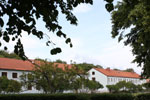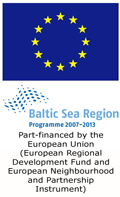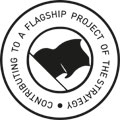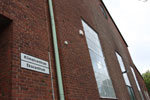12.-.14.12.2011
Official Co2olBricks Seminar in Malmö, Sweden
In December the Co2olBricks partners met in Malmö to continue discussing the project’s development and how to proceed. Baseline studies for policy development for technical solutions and for education and training in the partner countries have been developed and needed to be discussed in order to see how these should and could be used to argue and move forward the issue of energy efficiency in historic buildings.
On 14.12.2011 the project partners of Co2olBricks and 8 guests attended a very intensive and interesting seminar about internal insulation, development of standards for energetic refurbishment of listed buildings and the stakeholder participation in the implementation of energy efficiency measures.
Dr. Rudolf Plagge of the Technical University of Dresden, Institute for Building Climatology gave extensive insights into the possibilities of internal insulations. Internal insulation is on the one hand an alternative to exterior insulation but on the other hand can cause problems with moisture and mould. An interior insulation is one of the solutions to preserve the historic value of listed buildings because it does not change the exterior outlook. The problem can be that when wrongly implemented mould grows, especially in corners. Dr. Plagge has developed capillary active insulation material that can absorb moisture from the room and from the exterior wall and is able to evaporate the moisture back to these medias when their humidity has dropped. Before an internal insulation is applied he conducts thorough simulations with his computer programs and thus can tell very exact how thick and in what way the internal insulation has to be applied.
Marte Boro of the Directorate for Cultural Heritage, Norway gave a report about the current state of a feasibility study to develop “Guidelines for improving energy efficiency of architecturally, culturally or historically valuable buildings” by the European Committee for Standardisation (CEN). She is member of the respective working group. Co2olBricks can contribute in the development process of the standard via the national mirror groups of the CEN-Organisation. A contact list will be available through Co2olBricks.
Marte Boro additionally presented some examples of energetic refurbishments of historic houses in Norway. She emphasized the need to look at the whole lifecycle-costs of building materials, that means the stored energy in old houses.
Rainer Scheppelmann of the International Climate Cooperation Agency at the Hamburg Ministry for Urban Development and Environment held a lecture how in the project EU CO2 80/50 stakeholders were involved in regional climate mitigation strategies. The main tool were workshops where the different stakeholders, such as industry, environmental groups, politicians, building companies, university / research, public enterprises and the chambers of commerce sat around a table and had a simulation tool at hand where they could simulate what happens to the CO2-emissions when they implement certain measures. The main aim of the workshops is to make it clear that all stakeholders have to agree on a coordinated strategy. An important outcome was that it is often very well possible to achieve a good result. Sometimes maybe not as ambitious as intended but usually much better than with out consensus.
Mr Scheppelmann offers to make a workshop with the simulation software within one of the next Co2olBricks meetings.
The meeting was held in a building in an area that was built in the 1930s as a hospital complex. The Boiler house has been refurbished to accommodate meeting rooms and exhibitions for the local Eco-centre. Other buildings in the area will be refurbished under Co2olBricks taking into account their cultural and architectural value, to house flats, schools and other functions.
The Co2olBricks experiences will feed into the redevelopment process in Malmö as well as Malmö will be able to share experiences to the project.
.
Presentations
Energetic Refurbishment of Brick Buildings - Dr.-Ing. Rudolf Plagge - PDF, 5.6 MB
EUCO2o80/50 - Rainer Scheppelmann - PDF, 4.6 MB

- (Source: City of Malmö)



